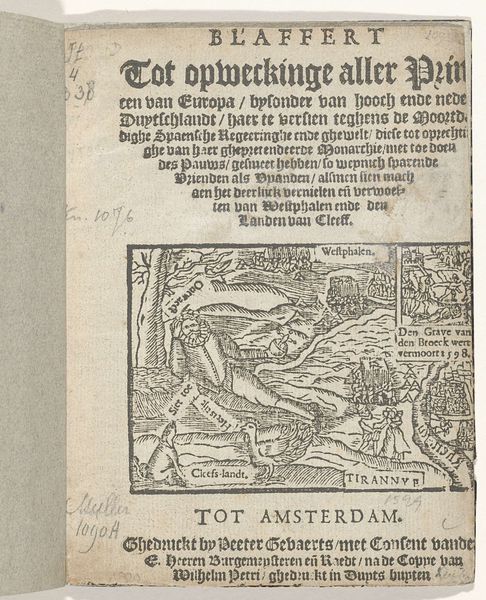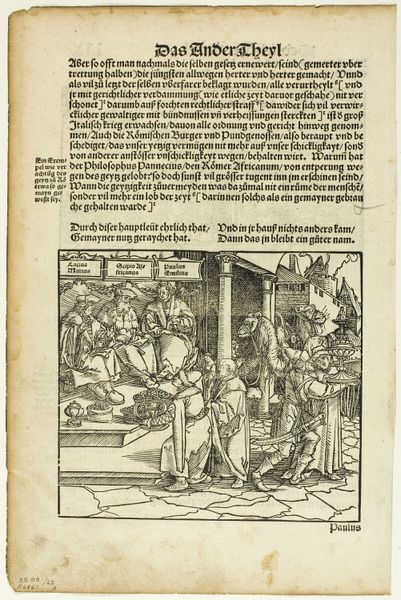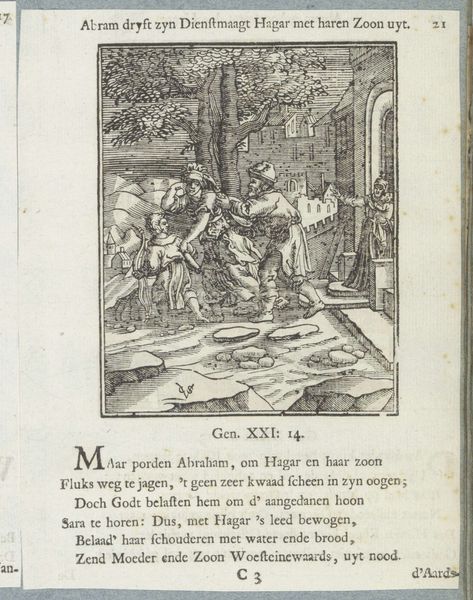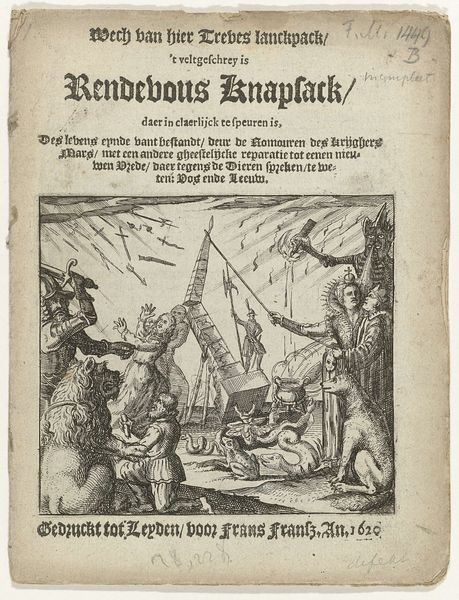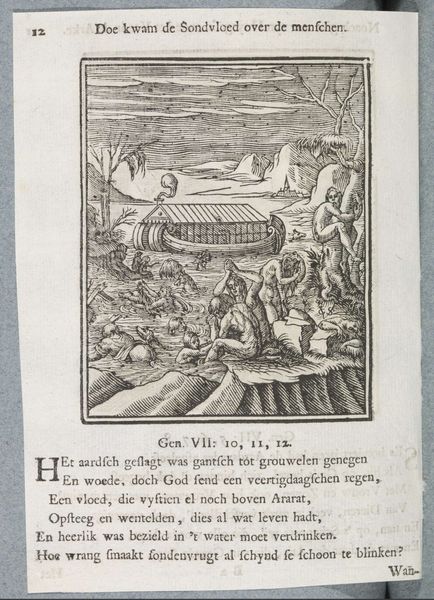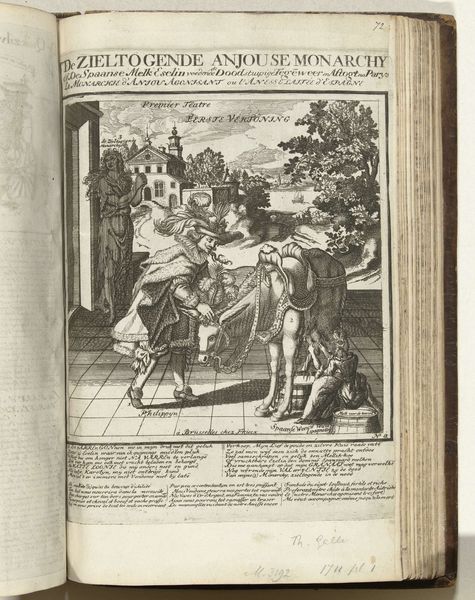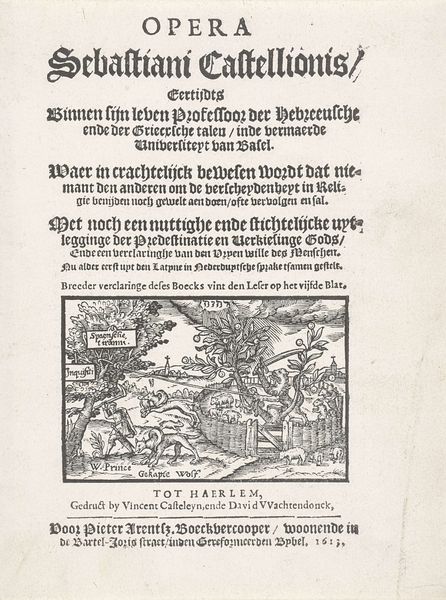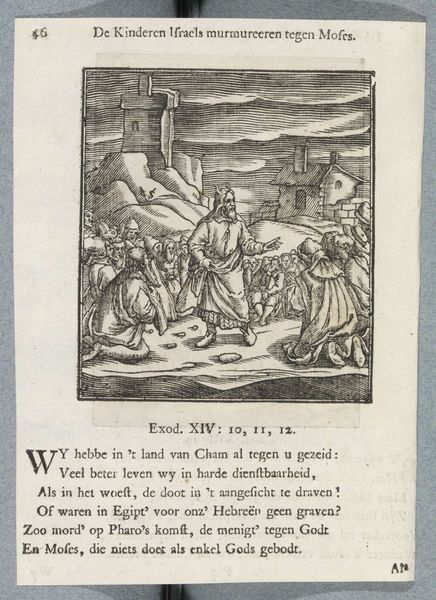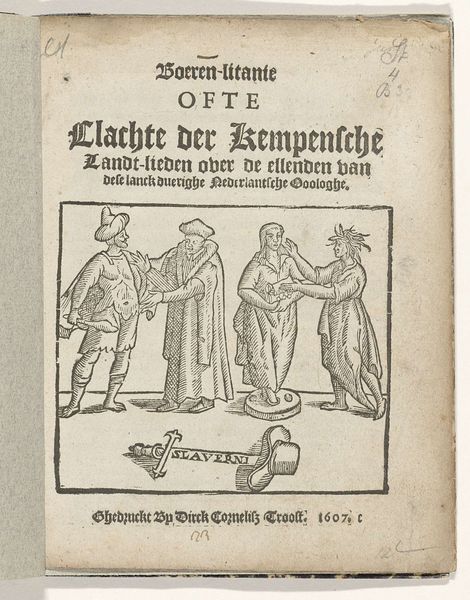
Titelpagina van het pamflet: Antwoordt op het tweede Refereyn, by de Overheerde Nederlantsche Provintien aen Hollant gheschreven : om haer met schoon-schijnende Redenen Ongefondeerde dreygementen, ende ongelijcke Exempelen te bewegen Vrede te maken met den Spangiaert, 1598 1598
0:00
0:00
anonymous
Rijksmuseum
print, paper, engraving
#
allegory
#
narrative-art
# print
#
paper
#
11_renaissance
#
engraving
Dimensions: height 185 mm, width 140 mm
Copyright: Rijks Museum: Open Domain
This is the title page of a 1598 pamphlet criticizing the Dutch provinces for considering peace with Spain, made by an anonymous artist. The dominant symbol is the multi-headed figure representing Spanish authority—a clear reference to the monstrous figures of mythology and the grotesque. This composite figure, with each head perhaps symbolizing different facets of Spanish power such as political, religious, and military, mirrors similar depictions of multi-headed beasts, which are seen across cultures. The image, overall, recalls the ship of state allegory—a trope that recurs throughout history, seen in ancient Egyptian funerary boats and Renaissance emblems. It represents the idea of collective leadership, such as in the Ship of Fools motif popularized by Sebastian Brant, which shows the dangers of navigation without a clear, moral compass. In this Dutch pamphlet, we see a ship without any morality! The underlying psychological tension conveys a sense of anxiety, distrust, and the fear of external control. This visual language taps into collective anxieties about national sovereignty and religious freedom, reminding us that the symbols we see in art are not just aesthetic choices, but powerful carriers of cultural memory and emotional resonance.
Comments
No comments
Be the first to comment and join the conversation on the ultimate creative platform.
